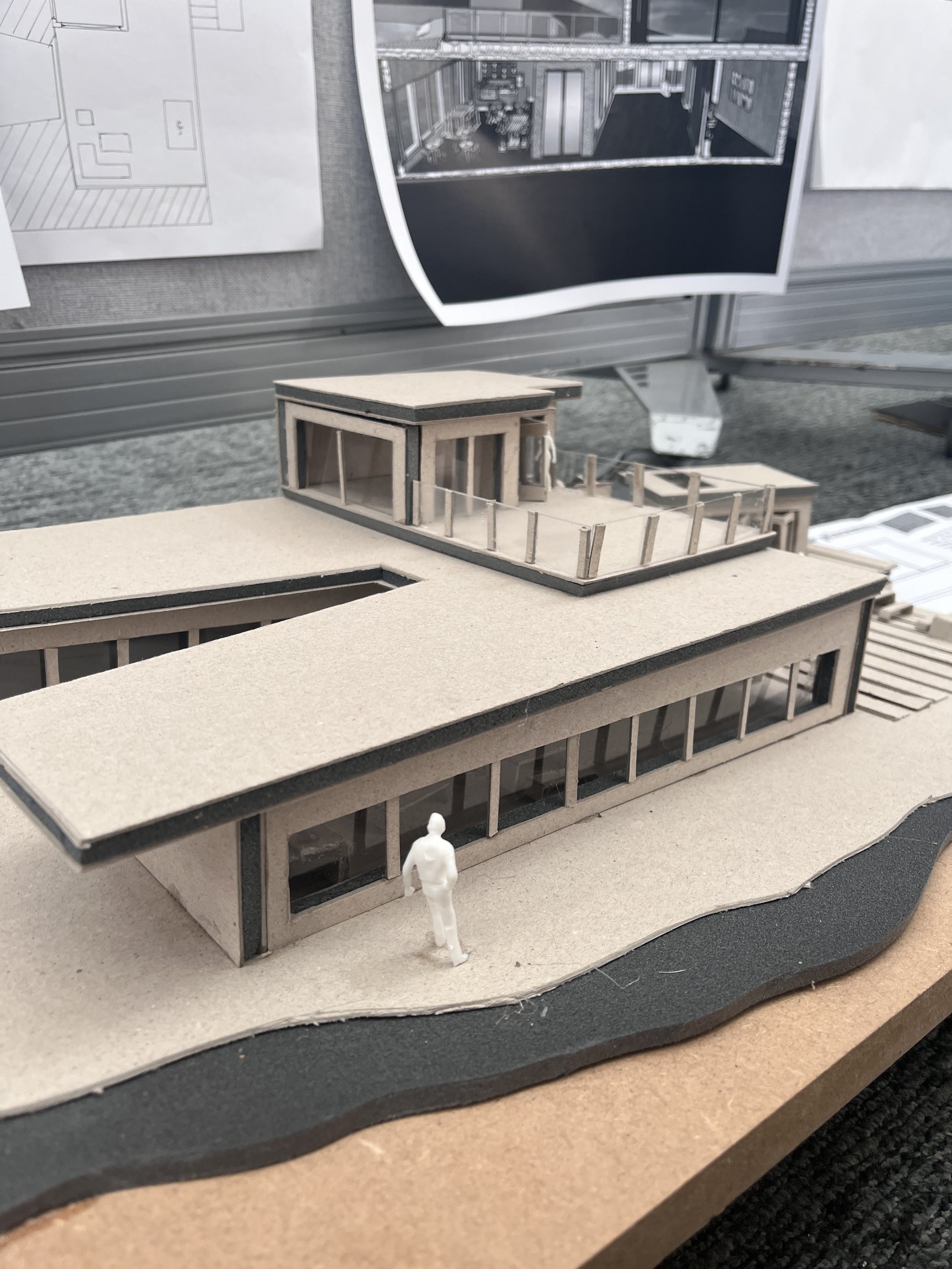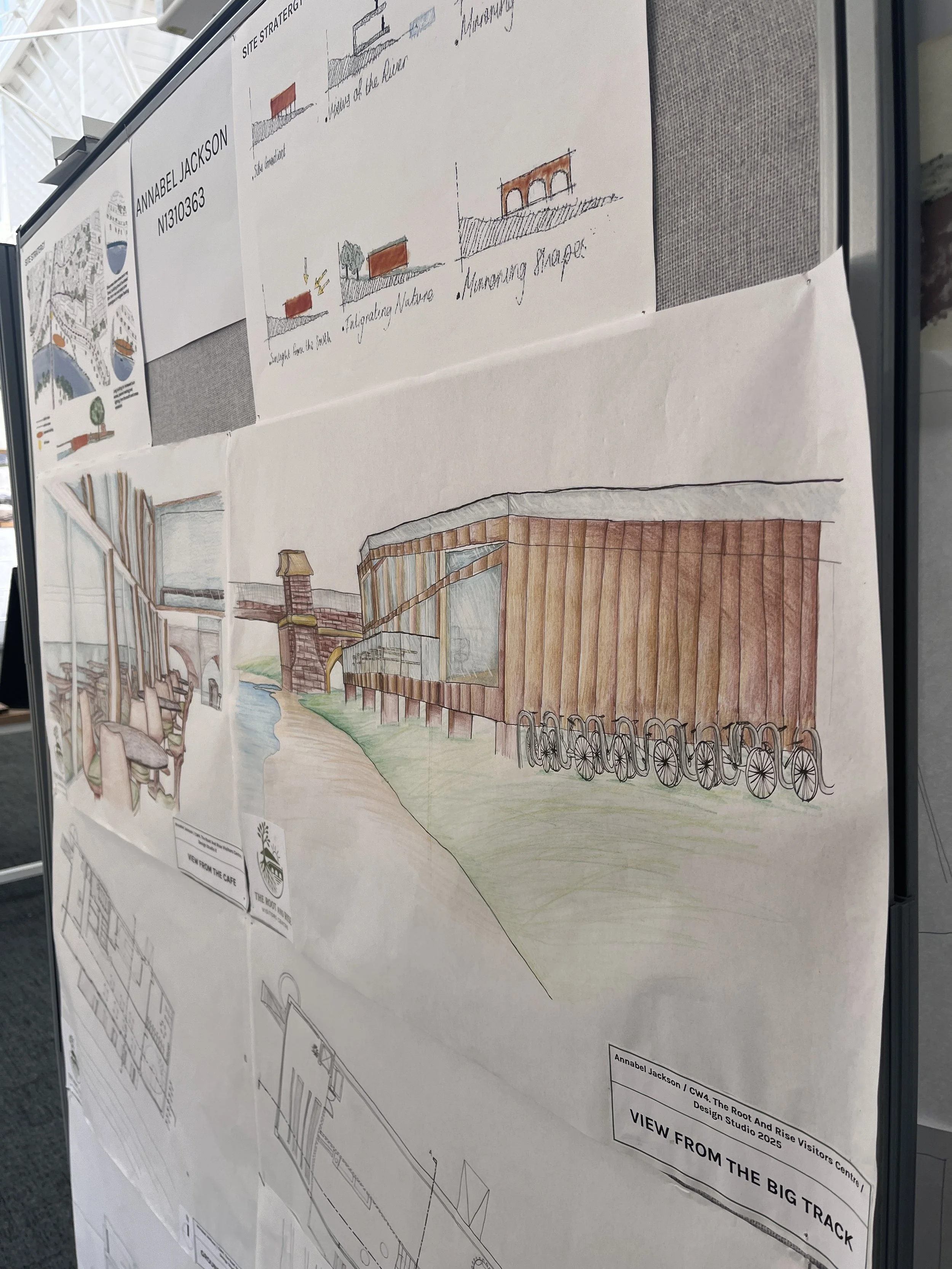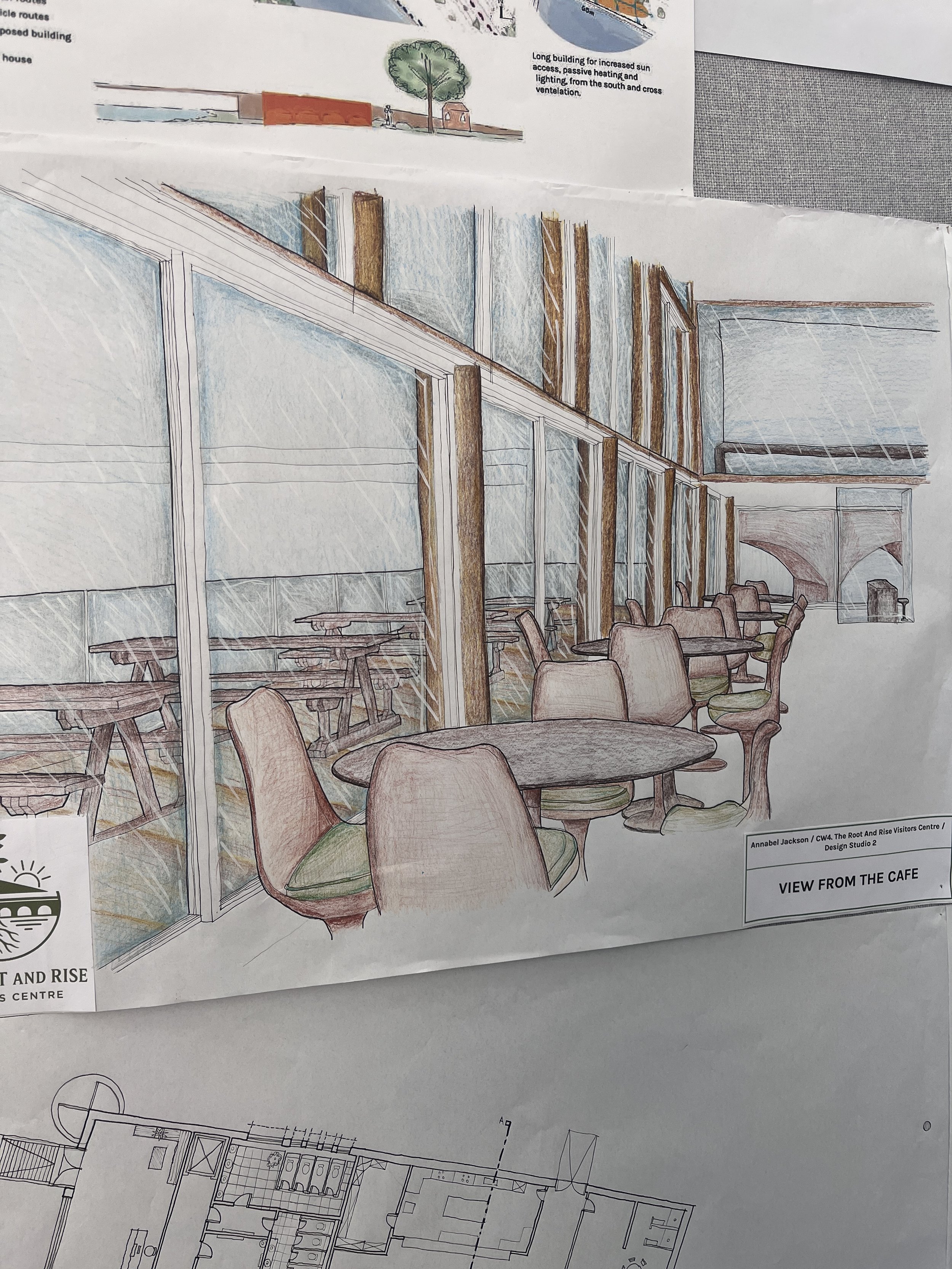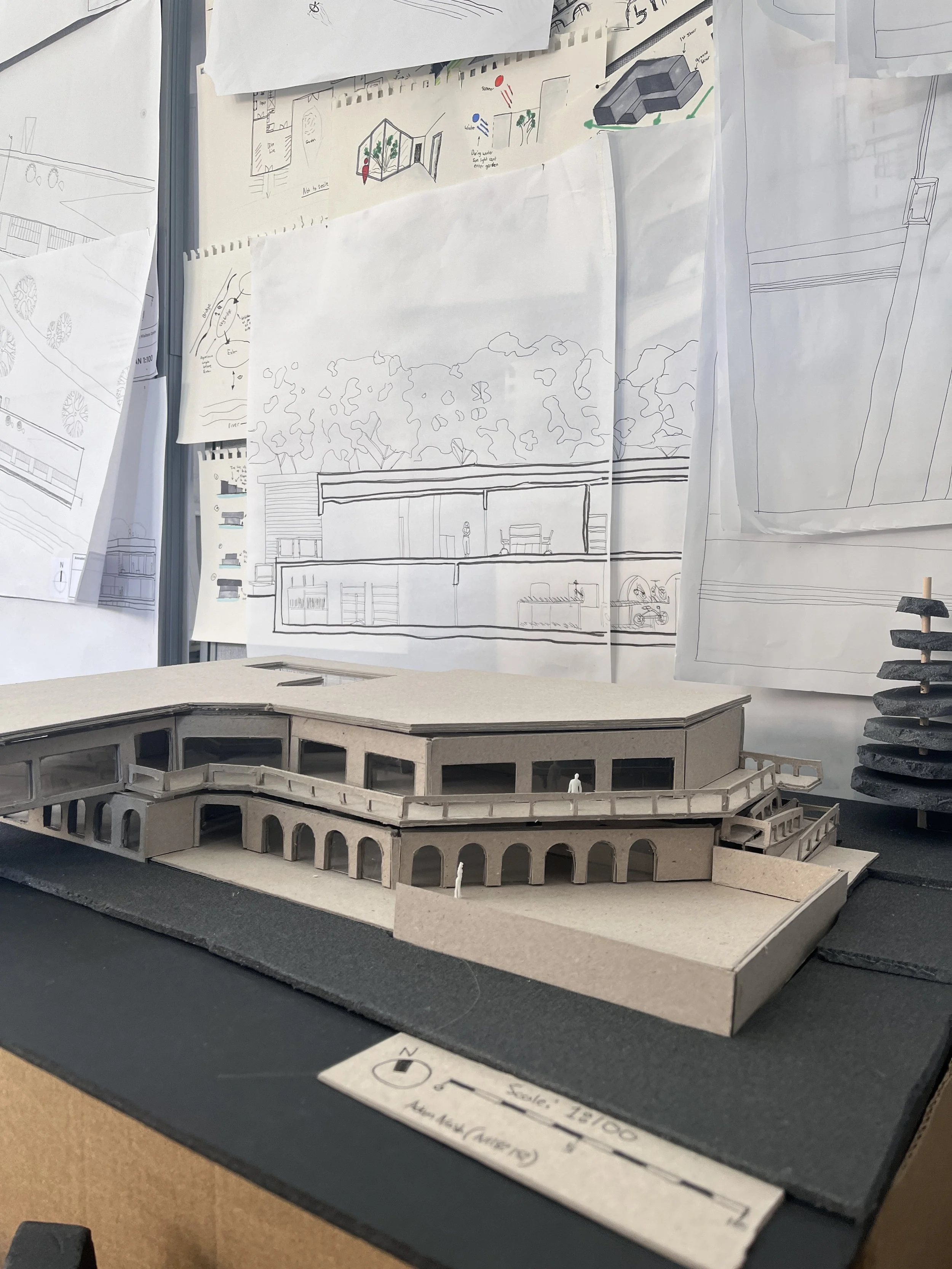The Creativity of Architecture Education
The inspiration for this post
As a University Studio Tutor I had the pleasure of talking through and supporting student design projects every Thursday from the initial brief right at the beginning of the project through to the final drawings and model at the end, with site analysis, concept design, design development and technical work all in between.
I, after years of study, once again had a Studio Day where I could get creative, explore new ideas and develop projects.
Thursdays were very much my creative outlet. I got to talk to students about projects that didn’t have planning issues and didn’t have to comply with building regulations. There was no contract administration, no actual client or contractors to work through issues with.
For the rest of the week, I worked in practice. During this time, specifically, I was studying for my Part 3 and taking over the day to day work from an Architect who had left the practice on a Traditional, listed, change of use £1m project where everything was overdue and over budget. My days started with Part 3 study learning about how to be an architect followed by doing the work during the day…working through planning issues, ensuring building regulation compliance, doing contract administration, talking to annoyed clients and expectant contractors .. you know, doing the job, but a far cry from my Thursdays.
The Shock
You can imagine my horror (maybe too much) and surprise (probably less hyperbole) when students started to ask me questions that dragged my brain back into practice.
Would this get through planning?
But this staircase wouldn’t meet building regulations, would it?
The client wouldn’t sign off on this?
The neighbours in the area wouldn’t like this and it wouldn’t get built would it?
DO NOT GET ME WRONG, I was impressed, these were first year architecture students and these questions showed a lot of promise for the future architects of the world. They were aware of their future responsibilities, rules that had to be followed, they were considered, intelligent and also.. unnecessary……and boring.
Freedom of First Year
Architecture school, especially for first year, where more than likely, this is your first experience designing spaces and researching architecture should be and will most likely be, the most creative space you will be in.
It is the best time and potentially the only time to this extent, where you can design something ridiculous and unbuildable but brilliant and no one can stop you.
Examples of the weird and wonderful projects that I either did myself or tutored students through:
A live/work unit to be attached to the top of an existing tower
Military Bootcamp based in the middle of a forest, partially underground, on ground and over ground.
A live/work unit for a single person who may have family over..in the middle of a public park
Hotel based in Rotterdam inspired by mechanical watches
A high security building based in a tower over the streets of London
An archive museum designed into underground tunnels cutting through Genoa Topography
These are not ‘real world’ briefs.
Yes, by all means, question the ridiculousness of it, but do not let that hold you back.
Be aware of the various issues but design without the regulations or barriers and just let your brain be as creative as possible because that is why the briefs are designed that way. It is to get you thinking creatively, pushing the boundaries and having fun with design.
Trust me, you have the rest of your architectural education and then career to learn and worry about all the things that you need to be aware of and think about in addition to the design.
In first year though, explore what could exist, and not what is already possible.
Appreciate the time where you can design a floating tower on a lake without worrying about how the local school is going to feel about the increased traffic or you can design a 3m wide glass spiral staircase with no handrail and no intermediate balustrade because you want a weightless structure that seems to disappear in the space.
Do not for example, move the tower to a more acceptable place or change the staircase to a 1.5m cast concrete stair that’s easier for the contractor to build and cheaper to get on site. (This makes me so sad)
Awareness vs Limitation
Now, to be clear, I’m not saying you need to completely forget about these real life issues, please don’t.
The understanding and awareness of planning, building regulations, buildability, sustainability, impact on the local area is hugely important. But it does not have to limit you and impede the creative freedom you have in architecture school, especially first year.
If you’re designing that glass staircase, it’s great to note that it might not comply with building regs, but don’t let that stop you exploring the concept and having your main image of that glass staircase disappearing into an atrium (or something).
The skill is in knowing the rules, and then choosing when and how to challenge them.
In fact, one of the best things you can do is to reflect on the real world implications throughout the design process. Almost a reflective piece either at the end of a project or at the end of each section where you acknowledge the real life issues, show you’ve done your research and are aware of the real world.
Would it pass planning? Maybe not.
Would the Contractor want to build it? Probably not.
Would the client afford it? Absolutely not.
Should you understand without showing your tutor a concrete stair.. unless it’s part of your concept and it’s the most beautiful concrete stair that compliments the rest of your design in some way.
Balance comes later
As you move towards the end of first year and into second and third year and have had the opportunity to learn how to design and be creative, the real world considerations will start to weave into your project more and more. You will start to be asked the questions and should have answers for them. You will however do better if you have learned how to design without fear.
Architects, in my opinion, should be pushing boundaries, designing what others haven’t thought of, using materials in new and interesting ways and creating beautiful spaces for people to enjoy as well as all the more the practical elements of the job too.
My advice
If you’re a first-year student reading this, enjoy this creative freedom.
Start your design process like you’ve never heard of planning permission.
Have your initial sketch be something that defies physics.
Draw the building that could never be built — and then figure out why.
These wild, impossible ideas are what keep architecture alive.
You’ll spend years ahead learning how to make things real, and you should. But the magic of first year is that you don’t have to yet.
If you got this far, thank you for reading! I hope you found this weeks issue helpful to you or for a friend or colleague. Feel free to reply or message me on any of the social handles below with your thoughts or any questions you have.
Signing off,
Aliya












